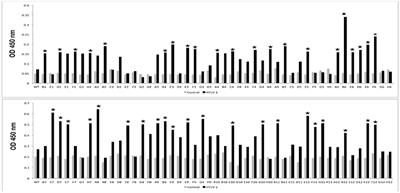EDITORIAL
Published on 11 Aug 2022
Editorial: Prevention and control of human T lymphotropic viruses 1 and 2 (HTLV-1/2)
doi 10.3389/fmed.2022.998431
- 891 views
- 2 citations
28k
Total downloads
125k
Total views and downloads
Select the journal/section where you want your idea to be submitted:
EDITORIAL
Published on 11 Aug 2022
REVIEW
Published on 08 Jul 2022

ORIGINAL RESEARCH
Published on 08 Jul 2022

ORIGINAL RESEARCH
Published on 09 Jun 2022

ORIGINAL RESEARCH
Published on 09 Jun 2022

COMMUNITY CASE STUDY
Published on 07 Jun 2022

ORIGINAL RESEARCH
Published on 03 Jun 2022

ORIGINAL RESEARCH
Published on 23 May 2022

OPINION
Published on 10 May 2022

ORIGINAL RESEARCH
Published on 05 May 2022

REVIEW
Published on 04 May 2022

MINI REVIEW
Published on 29 Apr 2022


Frontiers in Microbiology
Frontiers in Public Health
Infectious Diseases – Surveillance, Prevention and TreatmentOffline